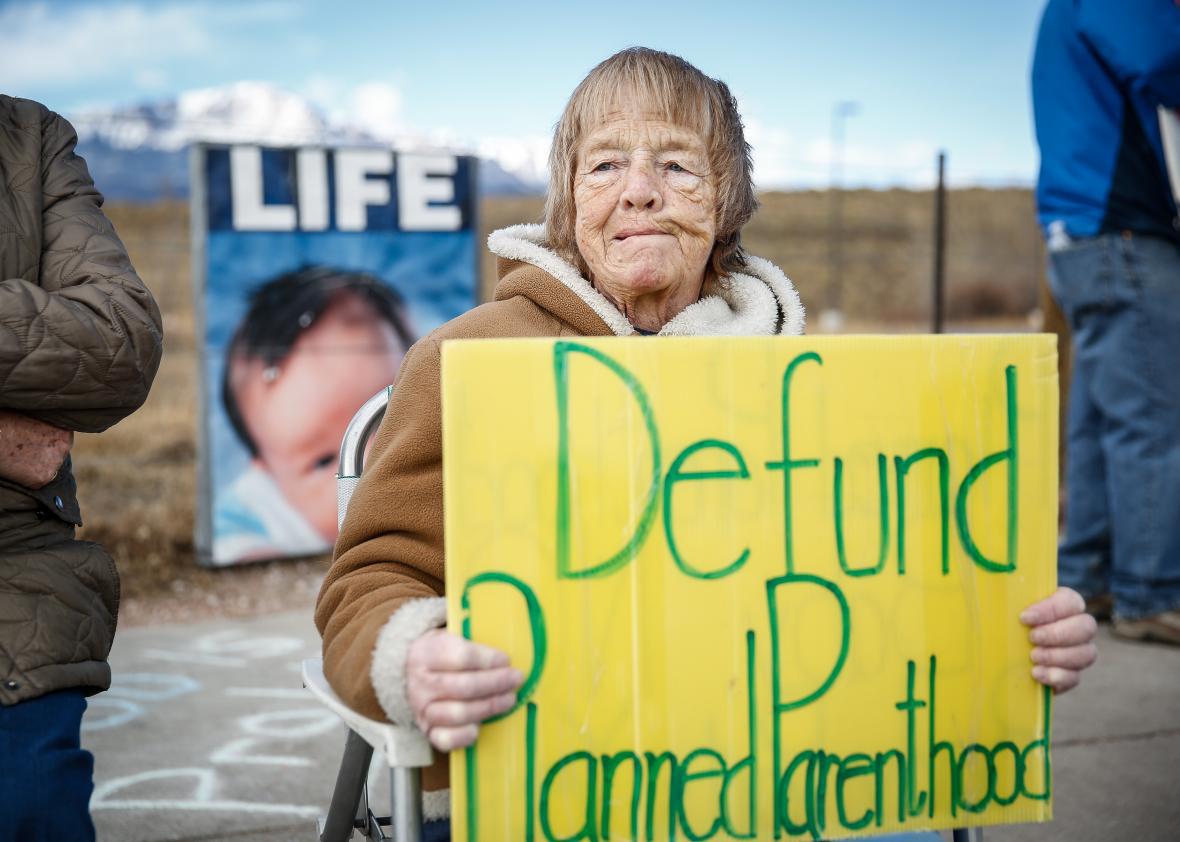One of the most-repeated arguments the GOP brandishes in its efforts to crush Planned Parenthood is that if affiliated clinics close or stop offering certain services, women can simply seek the same care elsewhere. Whatever federal money was going to Planned Parenthood’s health centers through Medicaid reimbursements or Title X grants would go to other health clinics, so all patients would have to do is change their providers.
A new analysis from the Guttmacher Institute proves that claim to be a fallacy. There are roughly 10,700 U.S. health centers that provide free or subsidized birth control, including Planned Parenthoods, hospitals, and federally qualified health centers (FQHCs), which offer comprehensive services through a significant proportion of public funding. Republicans are currently working to restrict funds from Title X, the federal government’s family-planning program now run by a birth-control skeptic, to FQHCs, only 60 percent of which currently offer contraceptive services to more than 10 women a year. These legislators want to prevent clinics that focus solely on reproductive health, and may provide abortion care or referrals, from getting such family-planning funding. Guttmacher reports that 85 percent of Planned Parenthood’s contraceptive patients—1.7 million people—live in counties that either have no FQHCs currently providing contraceptive care or have FQHCs that would have to at least double their patient load to take on the clients Planned Parenthood would leave behind if its affiliates shut down.
This is hardly news. If you’ve heard the FQHC term before, it may be because right-wing Florida legislators released a handy list of FQHCs last year when they were trying to prove that Medicaid patients would have plenty of other places to get birth control once they were barred from getting it at Planned Parenthood clinic. That list included dentists, elementary schools, and optometry offices, all of which are staffed by people who would look at any patient sideways if she asked for an IUD. FQHCs are great, but they’re not all up to par with Planned Parenthood when it comes to family planning and reproductive care.
Planned Parenthood clinics make up 6 percent of the 10,700 safety-net family planning providers in the U.S., but they serve 32 percent of all patients who rely on the free or low-cost birth control these providers offer. FQHCs, meanwhile, serve a disproportionately low slice of this patient population: just 30 percent, even though more than half of all safety-net family planning providers are FQHCs. According to the new Guttmacher analysis, each FQHC site that currently offers contraceptive services marks an average of 320 patients who use those services every year. The average Planned Parenthood takes on 2,950 contraceptive clients, more than nine times the FQHC load.
There is no conceivable way that the patients who get their free or subsidized birth control from Planned Parenthood could continue getting the care they need if Planned Parenthood clinics were forced to close or cut back on their contraceptive services. In 27 states, FQHC sites would have to double the size of their current roster of contraceptive patients; in nine of those, the average FQHC would have to triple its contraceptive client load. Women living in the 13 percent of U.S. counties with at least one Planned Parenthood but no contraceptive-providing FQHCs at all would have to travel unnecessarily long distances just to get basic care, burdening other communities’ health centers with surges of new patients. In 26 percent of the 415 U.S. counties with Planned Parenthoods, the current contraceptive-providing FQHCs would have to sextouple their contraceptive client load to account for the patients Planned Parenthood could no longer serve.
There is no easy way to cut Planned Parenthood out of the health-care ecosystem without causing a health crisis. Without this vital resource for reproductive health, all Americans who need safety-net medical services would suffer—patients who get care from Planned Parenthood, yes, but also those who rely on FQHCs, where quality of care would crumble under a wave of patients with nowhere else to go.
